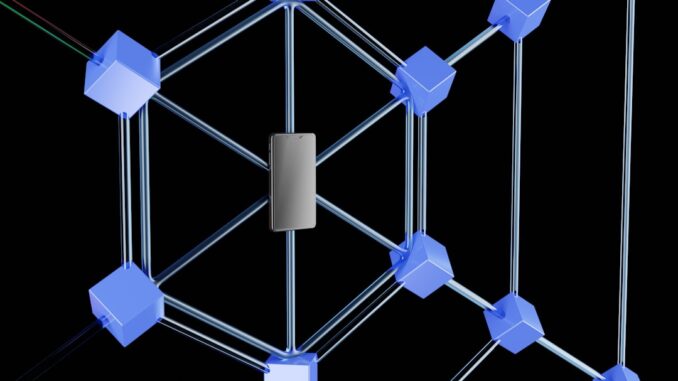
In the ever-evolving world of decentralized finance (DeFi), stablecoins have emerged as a cornerstone, offering a semblance of stability amidst the inherent volatility of cryptocurrencies. However, the quest to create a stablecoin that seamlessly balances decentralization, capital efficiency, and stability—a challenge often referred to as the “stablecoin trilemma”—has remained elusive. Enter JANUS, a pioneering Stablecoin 3.0 framework that promises to navigate this trilemma with a novel approach.
Understanding the Stablecoin Trilemma
The stablecoin trilemma posits that it’s nearly impossible for a stablecoin to simultaneously achieve three objectives:
- Decentralization: Ensuring no single entity has control over the stablecoin.
- Capital Efficiency: Minimizing the amount of collateral required to maintain the stablecoin’s value.
- Stability: Maintaining a consistent value, typically pegged to a fiat currency.
Traditional stablecoins often prioritize two of these aspects, sacrificing the third. For instance, fiat-backed stablecoins like USDC and USDT offer high stability and capital efficiency but are centralized, lacking true decentralization. Conversely, algorithmic stablecoins aim for decentralization and capital efficiency but often struggle with price stability, especially during market downturns. (multicoin.capital)
Assistance with token financing
JANUS: A New Paradigm
JANUS seeks to transcend these limitations by introducing a multifaceted approach:
-
Dual-Token System: At the heart of JANUS lies a dual-token ecosystem comprising Janus Alpha (JNA) and Janus Omega (JNO). This design allows for the separation of risk and stability, enabling the protocol to dynamically adjust to market conditions. (arxiv.org)
-
Multi-Collateralization: Unlike many stablecoins that rely solely on crypto assets, JANUS incorporates both crypto-assets and real-world assets (RWAs). This diversified collateral base enhances systemic safety and resilience, bridging the gap between DeFi and traditional finance. (arxiv.org)
-
Soft Peg Mechanism: Instead of rigidly pegging to a specific fiat currency, JANUS employs a soft peg that allows for controlled price oscillations. This flexibility helps the protocol adapt to inflationary pressures and market dynamics without the risk of sudden depegging. (arxiv.org)
-
AI-Driven Stabilization: Leveraging artificial intelligence, JANUS continuously monitors and adjusts its parameters to maintain equilibrium. This AI-driven approach ensures that the protocol remains adaptive and responsive to changing market conditions, enhancing both stability and efficiency. (arxiv.org)
Avoiding Ponzinomic Pitfalls
A significant concern in the stablecoin ecosystem is the risk of “ponzinomic” dynamics—systems that rely on continuous new investment to sustain value, akin to a pyramid scheme. JANUS addresses this by ensuring that its value derives from a variety of sources, including actual assets and returns from real-world investments. This diversified approach mitigates the reliance on new investors, fostering a more sustainable and resilient system. (scisimple.com)
Comparative Advantage
When compared to previous stablecoin models, JANUS offers several distinct advantages:
-
Enhanced Resilience: By incorporating different asset types and allowing for minor price fluctuations, JANUS builds resilience against market shocks. It doesn’t have to hold its breath and hope for the best during a downturn. (scisimple.com)
-
Modern Appeal: In a world filled with digital transformations, JANUS appeals to the tech-savvy crowd. Its blend of AI, innovation, and financial science makes it not just another stablecoin—it’s a modern marvel designed to thrive in the fast-paced DeFi environment. (scisimple.com)
The Role of the JNS Token
Central to the JANUS ecosystem is the JNS token, which serves multiple critical functions:
-
Governance: JNS holders have the power to vote on protocol upgrades, treasury management strategies, and new integrations with external DeFi platforms. This decentralized governance model ensures that the community has a direct say in the protocol’s long-term development. (medium.com)
-
Yield Aggregation & Staking Incentives: JNS holders can earn passive income through yield farming and staking. The JANUS protocol collects external token gains from integrated DeFi vaults, redistributing a portion of those profits into JNS buybacks and burns, ensuring sustainable yield generation while keeping inflation in check. (medium.com)
-
Deflationary Mechanics: Instead of relying on token emissions to generate yield, JANUS burns JNS tokens as part of its aggregation logic. Whenever collateral is deposited into the system, a fraction of it is allocated to buying and burning JNS, creating long-term scarcity and potential price appreciation. (medium.com)
Looking Ahead
As JANUS continues to evolve, its innovative approach offers a promising solution to the challenges that have plagued previous stablecoin models. By effectively balancing decentralization, capital efficiency, and stability, JANUS sets a new standard for what a stablecoin can achieve in the DeFi landscape.
References
-
Kampakis, S. (2024). JANUS: A Stablecoin 3.0 Blueprint for Navigating the Stablecoin Trilemma Through Dual-Token Design, Multi-Collateralization, Soft Peg, and AI-Driven Stabilization. arXiv. (arxiv.org)
-
Janus DeFi. (2025). The JNS Token: The Core of the Janus Ecosystem. Medium. (medium.com)
-
Janus DeFi. (2025). Janus vs. Terra: A Comparison Of Approaches. Medium. (medium.com)
-
Janus DeFi. (2025). JANUS: A New Solution for Stablecoins. Simple Science. (scisimple.com)
-
Kampakis, S. (2024). Dr Kampakis talks about flatcoins in the BBA metaverse. The Data Scientist. (thedatascientist.com)
-
Janus DeFi. (2025). Janus Protocol: Ratings & Details. CryptoTotem. (cryptototem.com)
-
Janus DeFi. (2025). JANUS: A Stablecoin 3.0 Blueprint. The Crypto White Papers | iHeart. (iheart.com)
-
Janus DeFi. (2025). Janus DeFi @JanusDeFi – Twitter Profile. Instalker. (instalker.org)


Be the first to comment